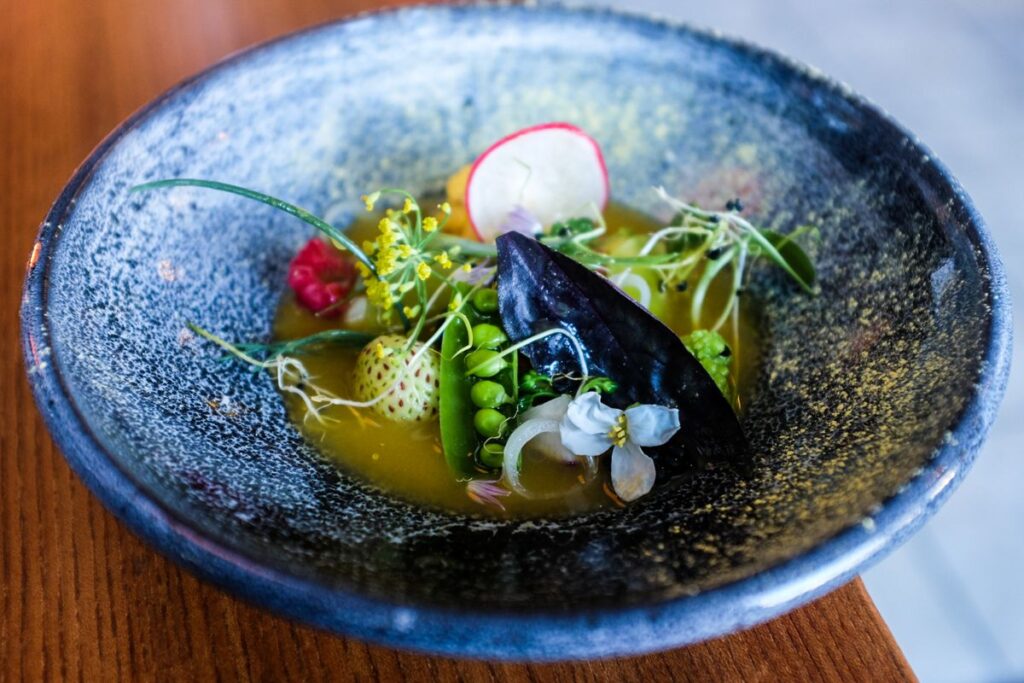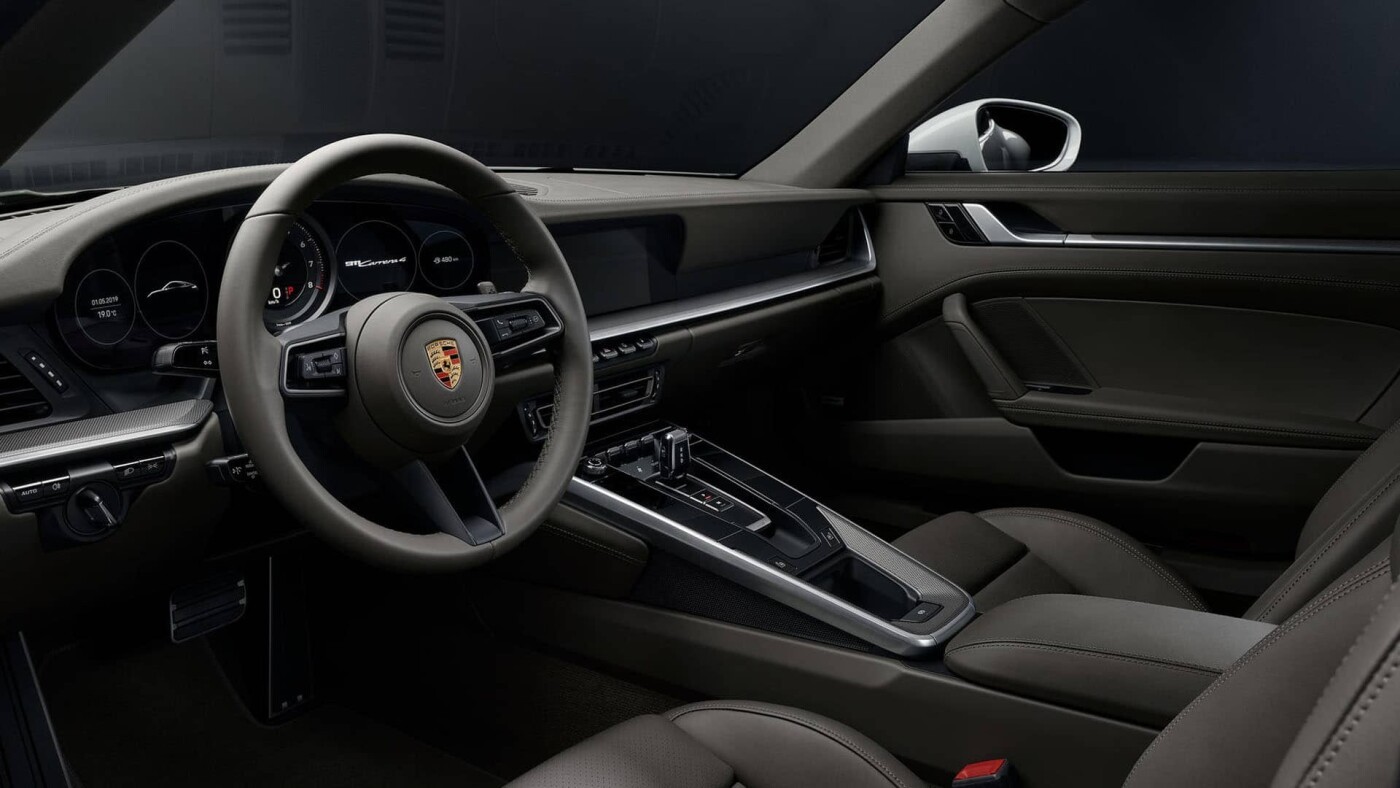In the world of fine dining, there is a celestial constellation of culinary accolades, and one finds the elusive Michelin star at the very pinnacle. These little emblems, awarded by the prestigious Michelin Guide, can transform restaurants into legends overnight. But are they worth the buzz and the hefty price tags often accompanying such dining experiences?
In exploring the gastronomic galaxy, we’ll look closer at the universe of Michelin stars and their remarkable significance in the culinary cosmos. We’ll delve into the magic within these starred establishments, from the extraordinary experiences they offer to the recognition they bestow upon chefs and restaurants alike.
So, prepare to embark on a culinary journey as we navigate the intriguing world of Michelin stars. In the following sections, we’ll uncover the secrets behind these celestial distinctions and ponder whether pursuing these twinkling stars truly pays off.
The Experience of Dining at a Michelin-Star Restaurant
A Culinary Odyssey Like No Other
Dining at a Michelin-starred restaurant is not just a meal; it’s a culinary odyssey that engages all your senses from the moment you step through the door. The unique dining experience these prestigious establishments offer is a symphony of flavors, textures, and emotions that leave a lasting impression.
The Ambiance: Where Elegance Meets Comfort
One of the first things you’ll notice when you enter a Michelin-starred restaurant is the carefully crafted ambiance. These dining spaces are a masterclass in interior design, where every detail, from the lighting to the furniture, is meticulously chosen to create a harmonious atmosphere.
Michelin-starred restaurants often strike a delicate balance between elegance and comfort. The décor exudes sophistication, yet it’s inviting and warm. You’ll find yourself in a space like a sanctuary for food lovers, where you can savor every moment of your dining experience.
Impeccable Service: Anticipating Your Every Need
Service at Michelin-starred restaurants is an art form in itself. From the moment you’re seated, you’re treated like royalty. The staff is well-trained, attentive, and possesses a comprehensive knowledge of the menu, ensuring that you receive personalized recommendations and insights.
What sets the service apart is the seamless choreography that happens behind the scenes. Servers work together harmoniously, ensuring your needs are anticipated and met before you even realize them. Whether refilling your wine glass or discreetly replacing your cutlery, the service is a ballet of efficiency and grace.
Attention to Detail: Perfection in Every Bite
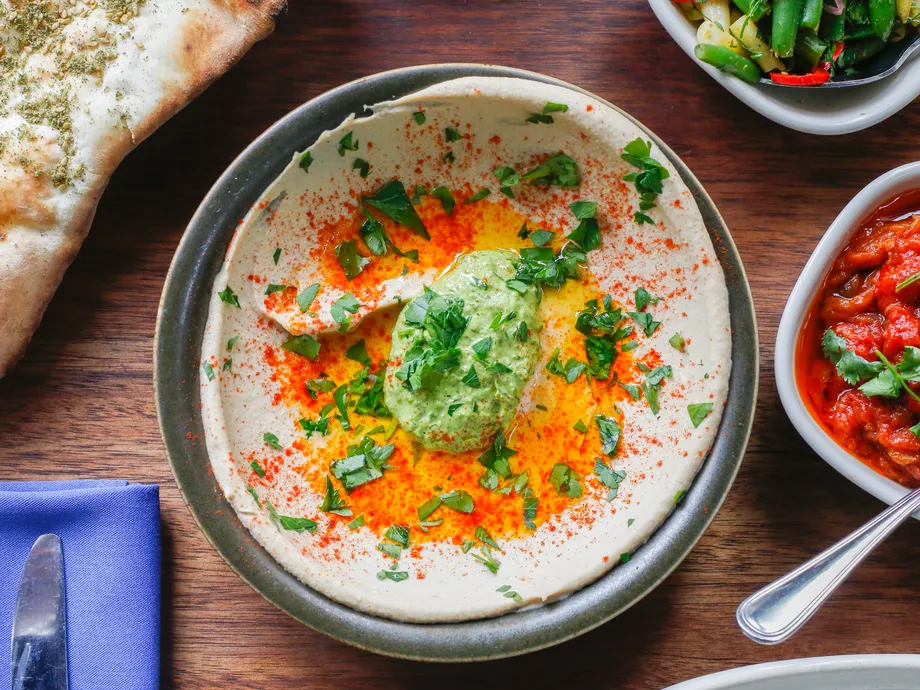
The hallmark of a Michelin-starred dining experience is the meticulous attention to detail that extends to every aspect of the meal. The presentation of each dish is a work of art, with colors, textures, and garnishes carefully chosen to delight the eye as much as the palate.
But it’s not just about aesthetics; it’s about the quality of ingredients and the precision in cooking techniques. Every ingredient is sourced with care, often locally and seasonally, to ensure freshness and flavor. Chefs in these establishments are culinary virtuosos; their creations are a testament to their dedication to the craft.
The experience of dining at a Michelin-starred restaurant is a smooth affair. It’s a journey through a meticulously curated menu, often featuring tasting menus that allow you to savor various dishes. Each course is a revelation, a new flavor profile that surprises and delights.
A Memorable Sojourn
In gastronomy, Michelin stars represent excellence, and the dining experience at these restaurants lives up to that lofty standard. From the moment you enter to the final bite of dessert, you’ll immerse yourself in a world of culinary artistry, where every detail has been thoughtfully considered.
The ambiance, service, and attention to detail create an unforgettable dining experience that lingers in your memory long after the meal. So, if you ever can dine at a Michelin-starred restaurant, don’t hesitate. It’s not just a meal; it’s a journey into the heart of culinary craftsmanship, where every bite is a masterpiece.
A Symphony of Flavors and Textures
As you progress through the courses at a Michelin-starred restaurant, you’ll notice that each dish is a carefully orchestrated symphony of flavors and textures. The chefs are culinary virtuosos, and their creations are designed to tantalize your taste buds and provoke thought.
Each ingredient is chosen for its ability to contribute to the overall harmony of the dish. The flavors are bold yet balanced, with unexpected combinations that challenge your palate in the most delightful ways. Every element on the plate plays a crucial role in the culinary narrative, from the umami-rich sauces to the delicate foams.
The texture of the food is another dimension to explore. You might encounter dishes juxtaposed with crunchy, creamy, or silky and crispy, creating a sensory experience beyond taste alone. It’s a gastronomic adventure that invites you to savor each bite slowly, appreciating the complexity of flavors and textures.
An Adventure for the Curious
Dining at a Michelin-starred restaurant is not just about satisfying your hunger; it’s an adventure for the curious. The menu often features ingredients and techniques that are uncommon in everyday dining. You might find dishes incorporating foraged ingredients, rare spices, or avant-garde cooking methods.
For those with an adventurous spirit, this is an opportunity to expand your culinary horizons. It’s a chance to taste something you’ve never encountered and appreciate the chef’s creativity and innovation. The dining experience becomes a conversation with the chef, a journey into their culinary philosophy and vision.
A Culinary Memory to Cherish
As the meal draws to a close and you reflect on the dining experience, you realize that dining at a Michelin-starred restaurant is not just about sustenance; it’s about creating cherished memories. The attention to detail, the exceptional service, and the extraordinary flavors all come together to craft an experience that transcends the ordinary.
These restaurants are where special occasions become extraordinary, celebrations become unforgettable, and a simple dinner becomes an event. Whether you’re celebrating an anniversary, a milestone, or simply indulging in a well-deserved treat, dining at a Michelin-starred restaurant is an experience that leaves an indelible mark on your memory.
Michelin-starred restaurants’ unique dining experience is a journey into the heart of culinary excellence. It’s a sensory adventure that engages your taste buds, senses, and emotions. So, savor it if you can dine at one of these establishments. It’s not just a meal; it’s an experience to be cherished and remembered for years.
The Cost of Excellence
Dining at a Michelin-starred establishment is often considered a pinnacle of culinary experiences. The attention to detail, the exquisite flavors, and the impeccable service all contribute to an extraordinary dining journey. However, one aspect of dining at these renowned restaurants can be a significant consideration for many: the cost. This section will delve into the financial aspects of dining at a Michelin-starred restaurant, compare it to regular establishments, and discuss whether the price is justified.
The Initial Sticker Shock
Let’s address the elephant in the room—Michelin-starred dining is not budget-friendly. The price tag associated with a meal at these prestigious establishments can be, for some, eye-watering. It’s not uncommon to see tasting menus that surpass the cost of a typical week’s groceries. So, what exactly accounts for the high cost?
Ingredients and Expertise
Part of the expense can be attributed to the quality and sourcing of ingredients. Michelin-starred chefs are dedicated to sourcing the finest, often rare, ingredients. These include truffles, caviar, and seasonal delicacies with a premium price tag. Additionally, the culinary expertise required to transform these ingredients into works of art is unparalleled.
Labor and Attention to Detail
The attention to detail extends beyond the kitchen and into the dining room. The service staff at Michelin-starred restaurants is highly trained and meticulously attentive, ensuring that every aspect of your dining experience is flawless. This level of service requires a well-compensated and dedicated team.
Innovation and Creativity
The culinary world’s leading edge is often found in Michelin-starred kitchens. Chefs invest in research and development, experimenting with new techniques and ingredients. This innovation comes at a cost, and diners are paying for a front-row seat to culinary creativity.
Comparing the Costs

Now, let’s put the cost of dining at a Michelin-starred restaurant into perspective by comparing it to dining establishments.
Regular Restaurants
You can enjoy a satisfying meal at a typical neighborhood restaurant without breaking the bank. These restaurants focus on delivering value for money, offering hearty portions and straightforward flavors. While the dining experience may lack the refinement and intricacy of a Michelin-starred meal, it’s accessible to a broader range of budgets.
Justification of Cost
The question that often arises is whether the high cost of dining at a Michelin-starred restaurant is justified. The answer is subjective and depends on your priorities and expectations. Here are a few considerations:
A Rare and Memorable Experience
Dining at a Michelin-starred restaurant is not an everyday occurrence. It’s a rare and memorable experience that can highlight a special occasion or a once-in-a-lifetime treat. For many, the opportunity to taste the creations of a culinary genius justifies the expense.
Culinary Artistry
The cost may be more easily justified if you’re passionate about food and consider dining an art form. Michelin-starred restaurants represent the epitome of culinary artistry, and the price reflects the artistry that goes into each dish.
Budget Considerations
It’s essential to consider your budget when dining at Michelin-starred restaurants. While it’s an extraordinary experience, it’s something only some can afford regularly. Many diners choose to save and plan for this experience on special occasions.
Dining at a Michelin-starred establishment undoubtedly comes with a high price tag, but it’s an experience that transcends the ordinary. The cost reflects the exceptional quality of ingredients, the expertise of the culinary team, and the dedication to providing an unparalleled dining journey.
Whether the cost is justified depends on your personal preferences and priorities. For those who value exceptional gastronomy and are willing to splurge on memorable experiences, dining at a Michelin-starred restaurant is a worthwhile investment. However, it’s essential to approach it with budget considerations and savor it as a rare and extraordinary treat in the culinary world.
The Memories and Prestige of Dining at a Michelin-Starred Restaurant
Dining at a Michelin-starred restaurant transcends the realm of a mere meal; it is an experience that leaves an indelible mark on your memory. Beyond the exquisite flavors and impeccable service, the intangible aspects—the memories created and the associated prestige—elevate this culinary journey to unparalleled significance. This section will delve into the intangible value of dining at a Michelin-starred restaurant, sharing anecdotes and examples of memorable experiences that go on the plate.
A Feast for the Senses
Dining at a Michelin-starred restaurant is an immersive sensory experience. The ambiance, anticipation, and flavors combine to create that linger long after the last bite. These memories often start with the setting itself.
The Ambiance: Where Elegance Meets Comfort
The ambiance of a Michelin-starred restaurant is carefully curated to immerse diners in a world of refined beauty. Whether it’s a historic building with ornate decor or a sleek and modern space with minimalist design, the setting is chosen to enhance the overall experience. The soft glow of candlelight, the subtle hum of conversation, and the clinking of wine glasses combine to create an atmosphere that is both intimate and celebratory.
Culinary Artistry in Every Bite
Each dish served in a Michelin-starred restaurant is a work of culinary artistry, and the memories it creates are a testament to the chef’s creative genius. These are dishes that surprise, delight, and challenge the palate. They are carefully crafted with precision, using the finest ingredients and innovative techniques.
Creating Lasting Memories
Special Occasions Elevated
Many diners visit Michelin-starred restaurants for special occasions—anniversaries, proposals, milestone birthdays. The memories created in these moments become intertwined with the restaurant itself, adding a layer of significance to the dining experience. A proposal over dessert, an anniversary toast with champagne—the restaurant becomes the backdrop to life’s most cherished memories.
Anecdotes of Remarkable Experiences
To truly appreciate the memories created at Michelin-starred restaurants, let’s hear some anecdotes from those who have dined at these prestigious establishments:
The Proposal at Per Se
John and Sarah had been dating for years, and John decided it was time to pop the question. He chose Per Se, a Michelin three-star restaurant in New York City, for the occasion. Just as dessert was served—a stunning chocolate soufflé—John knelt and proposed. The entire restaurant erupted in applause, and to this day, the couple fondly recalls the moment they became engaged at a Michelin-starred restaurant.
A Culinary Journey at El Celler de Can Roca
Ella and Mark, avid food enthusiasts, embarked on a culinary journey at El Celler de Can Roca in Spain, a Michelin three-star restaurant renowned for its avant-garde cuisine. They still talk about the “olive tree” dessert—an intricate creation that resembled a mini olive tree with olive-shaped chocolates hanging from its branches. It was not just a dessert but a piece of art that left a lasting impression.
The Prestige of Michelin Stars
Dining at a Michelin-starred restaurant also bestows a sense of prestige. It’s an acknowledgment of your appreciation for fine dining and an affirmation that you value exceptional culinary experiences.
A Badge of Distinction
When you dine at a Michelin-starred restaurant, you become part of a select group of discerning diners who seek the best. It’s a badge of distinction that sets you apart, a statement that you appreciate the artistry of food and the culinary team’s dedication.
A Story to Share
The prestige of dining at a Michelin-starred restaurant also provides a captivating story to share with friends and family. It becomes a topic of conversation, a source of envy, and an inspiration for others to embark on culinary adventures.
Dining at a Michelin-starred restaurant is not just a gastronomic experience; it’s a journey that creates lasting memories and bestows a sense of prestige. The ambiance, the culinary artistry, and the significance of special occasions all contribute to the intangible value of dining at these esteemed establishments.
The anecdotes and stories of memorable experiences testify to the enduring impact of dining at Michelin-starred restaurants. These are not just meals; they are chapters in the book of life’s most cherished moments and leave an indelible mark on the heart and memory of every diner.
Culinary Recognition: The Michelin Star’s Testament to Excellence
In gastronomy, no greater accolade exists than the prestigious Michelin star. Awarded by the Michelin Guide, these stars serve as a beacon of culinary excellence, a testament to a restaurant’s exceptional culinary skills, and an affirmation of its dedication to the art of food. In this section, we will delve into the significance of receiving a Michelin star, explaining how it stands as a symbol of culinary mastery and discussing its profound impact on the chef’s reputation and the establishment.
A Culinary Triumph
The Rigorous Inspection Process
Earning a Michelin star is no small feat; it culminated in dedication, hard work, and unwavering commitment to cooking. To understand the significance of this recognition, it’s essential to grasp the rigorous inspection process conducted by Michelin inspectors.
These anonymous inspectors visit restaurants incognito, evaluating every aspect of the dining experience with meticulous detail. They assess the quality and creativity of the dishes, the skill in execution, the ingredients’ freshness, and the culinary journey’s consistency. Only those establishments that consistently deliver outstanding performances earn the coveted stars.
A Symbol of Exceptional Culinary Skills
Receiving a Michelin star is a powerful testament to a restaurant’s exceptional culinary skills. It signifies that the chef and their team have mastered the art of cooking and pushed the boundaries of creativity and innovation. Each dish presented to diners is a masterpiece, showcasing a profound understanding of flavors, textures, and techniques.
The Impact on Reputation
A Spotlight on the Chef
For chefs, a Michelin star is a career-defining achievement. It catapults them into the limelight of the culinary world, placing their name among the most respected and admired in the industry. The recognition extends far beyond the walls of their restaurant; it becomes a part of their professional identity.
Chefs who earn Michelin stars often find themselves in high demand, invited to collaborate on international culinary events, and featured in food festivals and television programs. The star symbolizes their dedication, creativity, and unwavering commitment to delivering exceptional dining experiences.
The Establishment’s Ascension
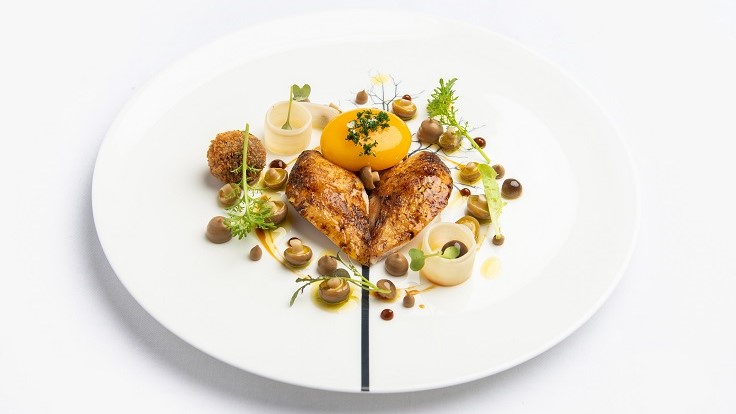
For the restaurant itself, receiving a Michelin star is a game-changer. It attracts food enthusiasts and discerning diners who seek the best. The star becomes a beacon, guiding food connoisseurs to the establishment and solidifying its place among the culinary elite.
The impact on business is palpable. Reservations soar, and tables are often booked months in advance. The restaurant’s reputation extends globally, attracting both local patrons and international visitors who come to savor the Michelin-starred experience. This newfound prestige brings financial success and a sense of validation for the entire team behind the scenes.
A Michelin star is more than just an emblem; it is the ultimate testament to exceptional culinary skills. It signifies that a restaurant has achieved the highest level of mastery in cooking, delivering experiences that transcend the ordinary.
The impact of a Michelin star on the reputation of the chef and the establishment is profound. It elevates them to a recognition and admiration that few achieve in their culinary careers. It validates their dedication, creativity, and unwavering commitment to the art of food. This recognition echoes in the Michelin Guide and the hearts and palates of every diner who experiences their exceptional cuisine.
Attracting Discerning Diners: The Magnetic Pull of Michelin Stars
In the culinary universe, where dining experiences range from the ordinary to the extraordinary, Michelin stars shine as guiding beacons for discerning diners searching for the pinnacle of gastronomic delight. These prestigious stars symbolize culinary excellence and innovation, drawing a distinguished crowd of food enthusiasts seeking the world’s best dining experiences. In this section, we’ll journey to understand how Michelin stars attract discerning diners and explore how these celestial accolades lead to a significant increase in reservations and demand for the honored establishments.
The Allure of Culinary Excellence
A World of Choices
In a world of dining options, from street vendors to fine-dining establishments, discerning diners seek more than just a meal; they seek an experience that transcends the ordinary. Michelin stars signify culinary excellence at its zenith—an assurance that every dish served is a masterpiece crafted with precision, innovation, and the finest ingredients.
A Quest for Exceptional Flavor
Discerning diners are not merely looking to satisfy their hunger; they are searching for exceptional flavors that linger on the palate long after the meal ends. Michelin-starred restaurants offer a sensory journey where each bite is a revelation—a burst of flavors, textures, and aromas that captivate the senses and create lasting memories.
The Impact on Reservations and Demand
Awaiting a Coveted Table
One of the most noticeable effects of earning a Michelin star is the surge in reservations. Discerning diners, often willing to plan their dining experiences for months, eagerly await when reservations open for Michelin-starred establishments. The demand for these coveted tables is so high that securing a reservation can be as competitive as securing tickets to a sold-out concert or a major sporting event.
An International Following
Michelin stars don’t just attract local food enthusiasts; they draw discerning diners from around the world. International travelers often plan their itineraries around dining at Michelin-starred restaurants, transforming these culinary gems into global destinations. This international following amplifies the demand, making these restaurants perennially sought after.
The Effect on Local Dining Scenes
The presence of Michelin-starred restaurants has a profound impact on local dining scenes. It elevates the culinary reputation of an entire region, attracting food enthusiasts, critics, and aspiring chefs. In cities like New York, Paris, and Tokyo, the clustering of Michelin-starred establishments creates vibrant culinary hubs where discerning diners can explore a constellation of exceptional dining experiences.
Michelin stars possess a magnetic pull that draws discerning diners for the finest dining experiences. These culinary accolades signify a commitment to culinary excellence, innovation, and exceptional flavors—an irresistible combination for those who view dining as a form of art and exploration.
The impact of Michelin stars on reservations and demand is undeniable. They transform restaurants into culinary hotspots, where securing a reservation becomes a badge of honor. The global following of these stars further amplifies the demand, making Michelin-starred restaurants not just dining places but culinary pilgrimage destinations.
In essence, Michelin stars guide discerning diners, leading them to exceptional dining experiences that tantalize the palate, captivate the senses, and create cherished memories. They represent the zenith of gastronomy—an invitation to embark on a culinary journey like no other.
Global Exposure: The Radiance of Michelin Stars
Michelin stars, those coveted celestial accolades, have the remarkable ability to transform restaurants into international epicenters of gastronomy. These stars, awarded by the revered Michelin Guide, are symbols of culinary excellence and powerful magnets that attract tourists and food enthusiasts worldwide. In this section, we will illuminate the extraordinary global exposure that Michelin stars provide, showcasing how they shine as beacons of international recognition and sharing examples of restaurants that have basked in the radiance of this prestigious acclaim.
The Michelin Star Effect
Culinary Pilgrimages
For food enthusiasts and travelers seeking exceptional dining experiences, Michelin stars serve as guideposts on culinary pilgrimages. These stars signify that a restaurant has achieved the highest echelons of gastronomic excellence, making it a must-visit destination for those who appreciate the artistry of food.
A Seal of Quality
Michelin stars are universally recognized as a seal of quality and distinction. Tourists and food connoisseurs often turn to the Michelin Guide when planning their dining adventures, relying on its ratings and recommendations to ensure they savor their destination’s finest culinary experiences.
Culinary Tourism
Cities and regions with Michelin-starred restaurants become hubs of culinary tourism. Tourists specifically choose these destinations to indulge in exquisite dining experiences, boosting regional tourism. For example, cities like Paris and Tokyo have seen a surge in culinary tourism due to their high concentration of Michelin-starred establishments.
Showcasing Local Cuisine
Michelin stars are not limited to fine dining; they also highlight local and regional cuisines. This recognition encourages travelers to explore and appreciate the unique flavors and culinary trade of particular locales of a particular locale. For instance, food vendors in Bangkok have received international acclaim, drawing food enthusiasts from across the globe to savor authentic Thai flavors.
Restaurants That Have Shone on the Global Stage
El Celler de Can Roca, Girona, Spain
El Celler de Can Roca, a three-star Michelin restaurant in Girona, Spain, exemplifies the global exposure that comes with Michelin stars. Renowned for its innovative and avant-garde cuisine, the restaurant has attracted diners from around the world. Its international recognition has led to collaborations with chefs worldwide and invitations to prestigious culinary events.
Noma, Copenhagen, Denmark
Noma, an iconic restaurant in Copenhagen, Denmark, has held multiple stars and won “The World’s 50 Best Restaurants” multiple times. Its global acclaim has transformed Copenhagen into a culinary capital, drawing food enthusiasts and tourists eager to experience its groundbreaking Nordic cuisine.
Sukiyabashi Jiro, Tokyo, Japan
Sukiyabashi Jiro, a three-star Michelin restaurant in Tokyo, gained global fame after being featured in the documentary “Jiro Dreams of Sushi.” Tourists and sushi enthusiasts worldwide flock to this tiny establishment to savor the sushi crafted by Jiro Ono, a legendary sushi master.
Michelin stars are not just accolades but passports to international recognition and acclaim. They illuminate restaurants on the global stage, attracting tourists and food enthusiasts who embark on culinary journeys in search of exceptional dining experiences.
The global exposure that Michelin stars provide benefits the honored establishments and the regions and cities they call home. These stars elevate culinary tourism, showcase local cuisines, and transform destinations into gastronomic hotspots.
In gastronomy, Michelin stars are more than just ratings; they are symbols of culinary excellence that have the power to draw a global audience eager to savor the artistry of food. They remind us that food transcends borders and cultures, uniting people to pursue exceptional flavors and memorable dining experiences.
The Michelin Inspection Process: Unveiling the Stars
The Michelin Guide, renowned for its culinary ratings and coveted stars, is the ultimate arbiter of dining excellence. However, the path to receiving a Michelin star is not one paved with mere culinary craftsmanship; it is a journey that traverses the stringent and meticulous Michelin inspection process. In this section, we will delve into the intricacies of this process, explaining the rigorous standards upheld by Michelin inspectors and detailing the criteria they consider when awarding stars, which encompass food quality, creativity, and consistency.
The Anonymous Inspectors

Michelin inspectors are the enigmatic guardians of dining excellence. Their identities are shrouded in secrecy, and they visit restaurants incognito, ensuring that their presence does not influence the dining experience. This anonymity allows them to experience a restaurant as any regular diner would, without special treatment or forewarning.
The Three-Star Evaluation
Michelin stars are awarded based on a three-star evaluation system, each representing a distinct level of excellence.
One Star: A Very Good Restaurant
A one-star Michelin rating signifies that a restaurant is “a very good restaurant in its category” and offers high-quality cuisine worth a visit. This is the starting point for Michelin recognition and is often a significant accomplishment for any establishment.
Two Stars: Excellent Cooking, Worth a Detour
A two-star rating indicates “excellent cooking that is worth a detour.” It signifies that the restaurant has achieved remarkable culinary mastery and innovation. Dining at such an establishment is not just a meal; it’s an experience worth going out of your way to enjoy.
Three Stars: Exceptional Cuisine, Worth a Special Journey
The highest honor a restaurant can receive is three Michelin stars, which denotes “exceptional cuisine that is worth a special journey.” These are the pinnacle of culinary establishments, where dining is an extraordinary journey into the world of gastronomy. Each dish is a masterpiece, and every visit is a profound experience.
The Criteria for Michelin Stars
Michelin inspectors assess myriad factors when awarding stars, all contributing to the overall dining experience. While the exact criteria are a well-guarded secret, several key elements are known to be crucial in the evaluation process.
Food Quality
At the heart of Michelin star ratings is the quality of the food. Inspectors assess the flavors, textures, and techniques employed in each dish. The ingredients’ freshness and precision in cooking play a pivotal role in determining the star rating.
Creativity and Innovation
Michelin stars are not merely about traditional cuisine; they celebrate creativity and innovation. Inspectors look for chefs who push boundaries, introducing new flavors, techniques, and presentation styles that captivate the palate and engage the senses.
Consistency
Consistency is paramount. A restaurant cannot earn a Michelin star based on an exceptional meal; it must consistently deliver excellence. Inspectors visit establishments multiple times to ensure that the high standards are maintained.
Value for Money
Michelin inspectors also consider value for money. While Michelin-starred dining is often associated with high prices, the quality of the dining experience must justify the cost. Diners should feel that they have received exceptional value for their price.
The Michelin inspection process is a meticulous journey into the heart of dining excellence. Michelin inspectors, operating incognito and guided by stringent criteria, are responsible for recognizing and celebrating culinary mastery and innovation.
The criteria for Michelin stars encompass food quality, creativity, consistency, and value for money. These stars are symbols and a testament to a restaurant’s unwavering dedication to delivering exceptional dining experiences. They represent the culmination of culinary craftsmanship, innovation, and a commitment to tantalizing the palate and engaging the senses—a recognition that shines brightly in gastronomy.
The Art of Innovation: Pioneering the Path to Michelin Stars
In Michelin-starred dining, innovation, and creativity are not just prized qualities but heartbeats of culinary excellence. Restaurants that aspire to earn Michelin stars must not only master the art of cooking but also push the boundaries of creativity, introducing groundbreaking dishes and techniques that captivate the palate and transcend culinary norms. In this section, we will explore how innovation and creativity in cuisine play a pivotal role in earning Michelin stars, and we’ll provide examples of dishes and techniques that have set the stage for gastronomic innovation.
A Feast for the Senses
Beyond Tradition
Innovation in cuisine is about breaking free from culinary traditions and exploring uncharted territories. While traditional dishes have their place, Michelin-starred restaurants often seek to reinvent the familiar, introducing new flavors, textures, and presentations that surprise and delight diners.
Engaging the Senses
Innovation extends beyond taste alone; it engages all the senses. From the visual appeal of a dish to its aroma, texture, and even the sounds it makes, innovative cuisine creates a multisensory experience that elevates the dining journey to a new level of immersion.
Examples of Culinary Innovation
Molecular Gastronomy
Molecular gastronomy is a prime example of culinary innovation that has left an indelible mark on Michelin-starred dining. Chefs like Ferran Adrià of El Bulli in Spain and Heston Blumenthal of The Fat Duck in the UK pioneered this avant-garde approach, using science and technology to transform ingredients into unexpected textures and forms. Foams, gels, and liquid nitrogen became their tools, and dishes like Adrià’s “Olive Spheres” and Blumenthal’s “Snail Porridge” became legendary examples of culinary innovation.
Deconstruction and Reconstruction
Deconstruction and reconstruction are techniques that dismantle traditional dishes into their core components and then reassemble them unexpectedly. A classic dish like “Caprese Salad” might be deconstructed into its constituent elements—tomato, mozzarella, and basil—only to be reconstructed into a visually stunning and innovative presentation, such as “Tomato Water Spheres.”
Foraging and Locavorism
Innovation isn’t limited to high-tech approaches; it can also embrace a return to nature. Some Michelin-starred chefs have embarked on foraging expeditions to discover local, wild ingredients that add a unique touch to their dishes. This dedication to locavorism supports sustainability and diners to flavors they may have never encountered before.
The Impact on Michelin Stars
A Culinary Conversation
Innovation in cuisine is a culinary conversation between the chef and the diner. It challenges perceptions, invites curiosity, and fosters a sense of adventure. Michelin inspectors recognize that innovation is not just about novelty but a thoughtful and deliberate exploration of flavors, techniques, and ingredients.
Elevating the Dining Experience
Innovation elevates the dining experience at Michelin-starred restaurants, making it a meal and an artistic and intellectual journey. The boldness to experiment with flavors and the commitment to precision and execution are qualities that Michelin inspectors value when awarding stars.
In the world of Michelin stars, innovation and creativity are not just ingredients; they are the essence of culinary artistry. Chefs who earn these prestigious accolades are pioneers and visionaries who dare to explore uncharted culinary territories and push the boundaries of what is possible.
From molecular gastronomy to deconstruction and reconstruction and even the humble act of foraging, Michelin-starred chefs use innovation to engage the senses, challenge expectations, and create unforgettable dining experiences. This dedication to culinary innovation sets these restaurants apart, earning them the Michelin stars that signify the highest level of gastronomic mastery and creativity.
Consistency and Excellence: The Cornerstones of Michelin Stars
Earning a Michelin star is a momentous achievement in the culinary world, but retaining it year after year is a feat that only the most exceptional restaurants can accomplish. The steadfast commitment to consistency and excellence is at the heart of this enduring recognition. In this section, we will underscore the importance of consistently maintaining high standards to retain Michelin stars and explore how unwavering quality is a key factor in the world of Michelin accolades.
The Commitment to Excellence
A Star Earned, Not Given
A Michelin star is not merely a label but a testament to a restaurant’s unwavering dedication to culinary excellence. Achieving that first star is a remarkable accomplishment, but retaining it—and potentially earning additional stars—requires a relentless pursuit of perfection.
Elevating the Dining Experience
Consistency in quality is not just about upholding a particular standard but continually elevating the dining experience. Michelin-starred restaurants aim not only to meet but to exceed the expectations of their diners, ensuring that each visit is as exceptional as the last.
The Michelin Star Standard
Multiple Inspections
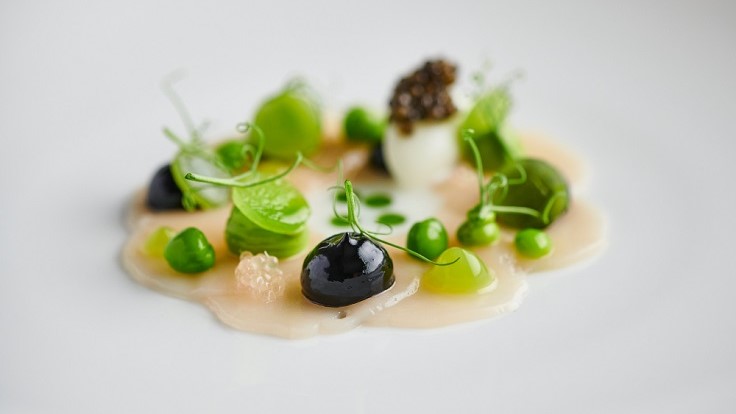
Michelin inspectors are not content with a single visit to assess a restaurant’s quality. They return multiple times, often unannounced, to gauge whether the high standards set by the restaurant are consistently maintained. This rigorous evaluation process ensures that diners can expect excellence on every occasion.
The Value of Every Dish
In Michelin-starred kitchens, every dish is crafted with precision and care, whether served to a first-time diner or a returning patron. The philosophy is simple: every plate should be a masterpiece, every ingredient should be of the highest quality, and every aspect of the dining experience should be meticulously orchestrated.
The Impact on Michelin Stars
An Uphill Climb
Michelin stars are not static; they are dynamic, requiring restaurants to push the boundaries of culinary excellence perpetually. The restaurant becomes complacent or allows its standards to slip. It risks losing the prestigious stars it worked so hard to earn.
The Power of Consistency
Consistency is the backbone of Michelin stars. It assures diners that their experience will match or exceed their previous visits. It instills trust in the Michelin Guide’s recommendations, leading diners to return and recommend the restaurant to others repeatedly.
A Gastronomic Legacy
Restaurants that consistently maintain their Michelin stars often become culinary institutions in their own right. They build legacies that transcend generations, attracting diners who seek a meal and an enduring connection to excellence.
In the world of Michelin stars, consistency and excellence are inseparable companions. They are the cornerstones upon which the culinary legacy of Michelin-starred restaurants is built. Earning a star is a moment of triumph, but retaining it year after year requires an unyielding commitment to upholding the highest standards of quality.
Maintaining Michelin stars is a testament to a restaurant’s dedication to its craft and its unwavering pursuit of culinary perfection. It is a promise to diners that each visit will be a remarkable experience, a promise that endures with each consistently exceptional dish and every meticulously orchestrated dining moment. In the world of Michelin accolades, consistency is not just a commitment; it’s a declaration of culinary excellence that stands the test of time.
Quality vs. Quantity: The Michelin Star Dilemma
In the illustrious world of Michelin stars, chefs and restaurateurs face a tantalizing dilemma: pursuing multiple stars versus dedication to maintaining a single star. This culinary conundrum fuels a spirited debate within the industry, each path offering its benefits and challenges. In this section, we will delve into the intriguing discourse between quality and quantity in the realm of Michelin stars, exploring the merits and drawbacks of both approaches.
The Quest for Multiple Stars
Elevating Culinary Mastery
For many chefs and restaurant owners, pursuing multiple Michelin stars is a relentless quest for culinary mastery. Earning two or three stars represents the zenith of gastronomic excellence—a testament to a chef’s unwavering dedication to pushing culinary boundaries.
International Recognition
Multiple Michelin stars elevate a restaurant’s local reputation and garner international acclaim. Restaurants with two or three stars become global destinations for food enthusiasts, attracting discerning diners worldwide.
Higher Revenue Potential
The prestige associated with multiple stars often leads to higher revenue potential. These restaurants can command premium prices, and the influx of diners eager to experience their culinary prowess can significantly increase business.
The Challenges of Pursuing Multiple Stars
The Demands of Excellence
Earning multiple stars is a formidable challenge. It requires a relentless commitment to maintaining the highest quality, creativity, and consistency standards. The pressure to outdo one’s previous achievements can be immense, leading to intense stress and scrutiny.
Increased Operational Complexity
Restaurants with multiple stars often have more complex operations. Managing a larger team, sourcing rare and exquisite ingredients, and orchestrating intricate tasting menus can be logistically challenging. The risk of missteps is higher, and any lapse in quality can have a profound impact.
The Merits of Maintaining a Single Star
Focused Excellence
Some chefs and restaurateurs prefer to focus on maintaining a single Michelin star, channeling their energies into perfecting their craft at a slightly lower level of intensity. This approach allows for a more relaxed atmosphere and greater work-life balance.
A Diverse Clientele
Maintaining a single star can attract a more diverse clientele, including fine-dining enthusiasts and those seeking a more approachable experience. This broader audience can lead to a steady flow of patrons and a more sustainable business model.
The Challenges of Maintaining a Single Star
The Pressure to Excel
While maintaining a single Michelin star may seem less daunting, the pressure to excel is still palpable. Diners with high expectations often return expecting a consistent and extraordinary experience. Any drop in quality or innovation can result in losing the coveted star.
Limitations on Revenue
Restaurants with a single star may have limitations on revenue potential. They may need help at the same premium prices as those with multiple stars, and their clientele might be more price-sensitive.
The debate between pursuing multiple Michelin stars and maintaining a single star reflects the diverse aspirations and challenges within the culinary world. Both paths have their merits and drawbacks, and the decision ultimately hinges on the goals and values of each restaurant.
For some, pursuing multiple stars is a relentless quest for culinary excellence, international recognition, and increased revenue potential. For others, maintaining a single star allows for a more focused and sustainable approach, appealing to a broader clientele.
In the end, whether a restaurant aims for one, two, or three Michelin stars, what truly matters is the unwavering commitment to delivering exceptional dining experiences, each plate a masterpiece, each moment a celebration of the artistry of food. Whether there are few or many, Michelin stars serve as a beacon of gastronomic excellence, guiding diners on a remarkable culinary journey.
The Impact on Pricing: How Michelin Stars Shape Menus
In gastronomy, Michelin stars are more than just culinary accolades; they are powerful influencers of menu pricing. The number of stars awarded to a restaurant can significantly affect the cost of dining. However, the question of whether having more stars justifies higher prices is a nuanced and intriguing one. In this section, we will explore how Michelin stars shape menu pricing and delve into the intricate balance between culinary excellence and the affordability of fine dining.
The Starry Influence on Pricing
A Prestige Premium
Restaurants that have been graced with Michelin stars often command a prestige premium. The mere association with these celestial accolades can justify higher menu prices. Diners are willing to pay a premium for the promise of an extraordinary dining experience, and Michelin stars guarantee that promise.
The Cost of Culinary Mastery
Michelin-starred restaurants invest heavily in sourcing the finest ingredients, employing top-tier culinary talent, and maintaining impeccable service standards. These investments in excellence naturally result in higher operational costs, which are reflected in the menu prices.
The Rarity Factor
Michelin stars are rare; diners understand that dining at a starred restaurant is only sometimes. This rarity factor adds to the allure, and diners are often willing to splurge on such special occasions, further justifying the higher prices.
The Debate: Do More Stars Mean Higher Prices?
The Pursuit of Excellence
Restaurants that earn multiple Michelin stars often operate at a level of culinary excellence that justifies their premium prices. The additional stars are seen as an endorsement of the extraordinary experiences they provide, and diners expect nothing less.
Balancing Affordability
While more stars may justify higher prices for some, there is a delicate balance to strike. Maintaining reasonable affordability is essential to ensure that a broader range of diners can experience Michelin-starred cuisine. Overly exorbitant prices may alienate potential patrons and limit the restaurant’s clientele.
The Influence of the Local Market
The local market also influences menu pricing. Competition can lead to more competitive pricing in cities with a high concentration of Michelin-starred restaurants. In contrast, restaurants in remote or exclusive locations may set their prices higher due to the limited dining options available to diners.
The impact of Michelin stars on menu pricing is undeniable. These coveted accolades bestow prestige and a heightened expectation of culinary excellence. Restaurants earning Michelin stars must invest in quality, innovation, and service, which naturally manifest in menu prices.
The question of whether more stars justify higher prices is multifaceted. The answer is a resounding yes for many diners seeking an extraordinary dining experience. Pursuing excellence, rarity, and quality assurance makes dining at a Michelin-starred restaurant a unique and memorable event worth the investment.
However, Michelin-starred establishments need to balance justifiably higher prices and affordability. Ensuring that a diverse range of diners can savor the artistry of food is a testament to the inclusive nature of gastronomy and the enduring appeal of Michelin-starred cuisine.
In the end, Michelin stars, whether one, two, or three, continue to shape the culinary landscape and the dining experiences and expectations of food enthusiasts worldwide.
Conclusion: The Worthiness of Michelin Stars in the Culinary Cosmos
In the journey through the culinary cosmos, the allure and influence of Michelin stars shine brightly as guiding stars for chefs and diners alike. This exploration has unveiled a multitude of facets, from the rigorous Michelin inspection process to the artistry of innovation, from the delicate balance of quality and quantity to the profound impact on menu pricing. As we conclude this gastronomic odyssey, let’s recap the key points discussed and reflect on the worthiness of Michelin stars and their profound impact on the culinary world.
The Michelin Star Journey
- The Michelin Inspection Process: Michelin stars are not handed out casually; they are earned through a meticulous inspection process that evaluates everything from food quality to creativity and consistency. Anonymous inspectors visit multiple times to ensure that the high standards are consistently met.
- The Art of Innovation: Innovation and creativity in cuisine play a pivotal role in earning Michelin stars. From molecular gastronomy to deconstruction and reconstruction, Michelin-starred chefs have pushed the boundaries of culinary norms, engaging diners’ senses and creating unforgettable experiences.
- Consistency and Excellence: Retaining Michelin stars requires an unwavering commitment to maintaining high standards consistently. Chefs and restaurants must continually elevate the dining experience, ensuring every dish is a masterpiece and every moment celebrates excellence.
- Quality vs. Quantity: The debate between pursuing multiple Michelin stars versus maintaining a single star reflects the diverse aspirations and challenges within the culinary world. Each path has its merits, from pursuing culinary mastery to a more focused and sustainable approach.
- The Impact on Pricing: Michelin stars shape menu pricing, often commanding a prestige premium. Diners are willing to pay for the promise of an extraordinary dining experience, justifying the higher prices associated with Michelin-starred restaurants.
The Worthiness of Michelin Stars
In conclusion, Michelin stars are not mere symbols of culinary excellence but beacons that guide chefs and diners on a quest for gastronomic perfection. They represent a relentless commitment to quality, innovation, and consistency—a commitment that transforms restaurants into destinations and dining into an art form.
The worthiness of Michelin stars lies in their ability to celebrate not just the flavors on a plate but the creativity, dedication, and passion of chefs who view cooking as an art and dining as an experience. They profoundly impact the culinary world, elevating standards, inspiring innovation, and inviting diners to embark on unforgettable journeys of taste and discovery.
In a world where culinary options abound, Michelin stars remain a source of trust and inspiration, guiding us to culinary excellence and reminding us that food is not just sustenance but a celebration of human creativity and ingenuity. So, as we continue to explore the culinary cosmos, let us cherish the worthiness of Michelin stars and savor the extraordinary experiences they promise in every dining adventure.

